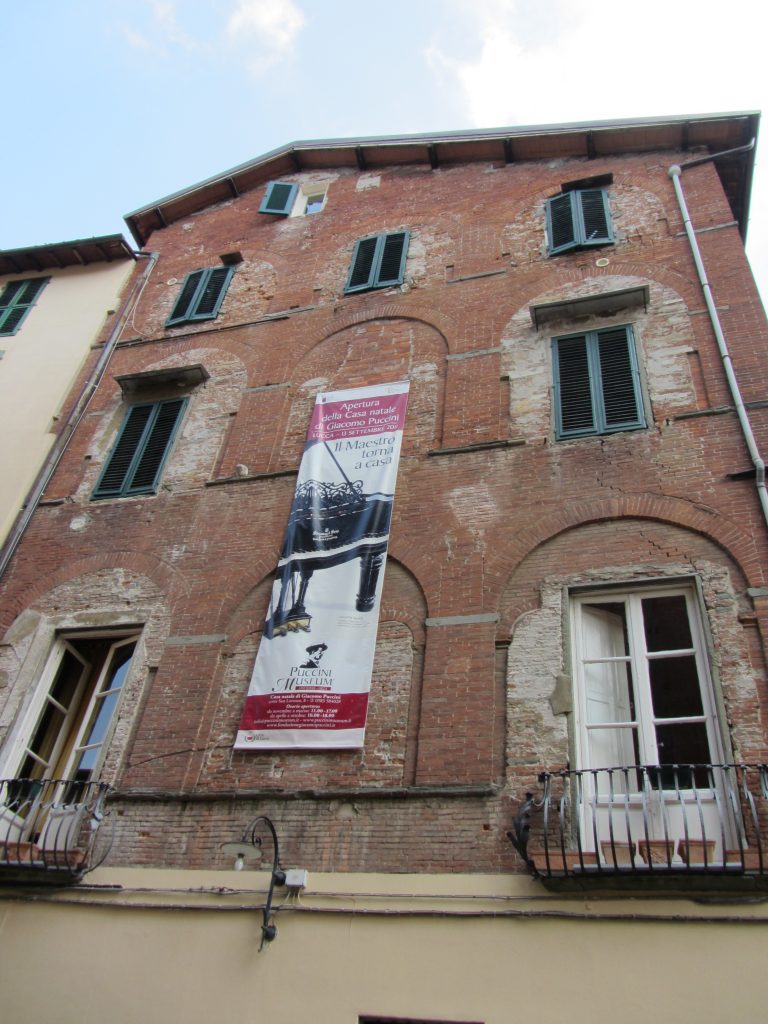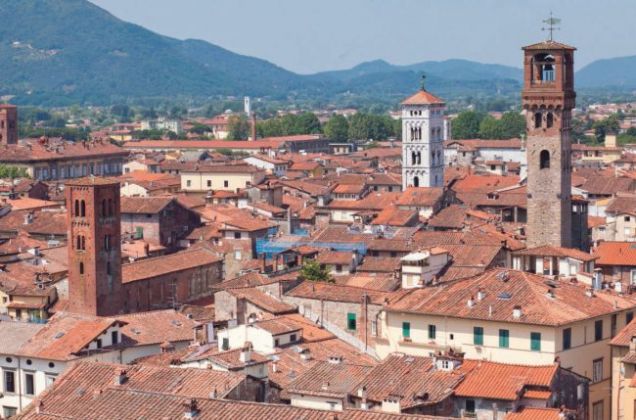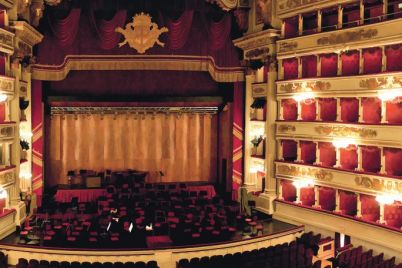The Tuscan city of Lucca boasts a long musical tradition. Almost everywhere you turn, there is a piazza dedicated to a famous musician or a palazzo housing a school of music. Lucca is also the birthplace of the great opera composer Giacomo Puccini, and by all accounts a disproportionate number of world class musicians and composers including the likes of Nicolao Dorati, Giovanni Lorenzo Gregori, Francesco Barsanti, Francesco Geminiani, Filippo Manfredi and Luigi Boccherini.
Many wonder how there can be such a concentration of musical talent in such a small city, and some have jokingly maintained that there is a special gene in the Lucchesi. The real reason may be that musical events were always regarded as integral to the political and social life of this independent city-state (an oligarchic Republic until 1799, then a Napoleonic principate, retaining its independence as a duchy under Maria Luisa and her son Carlo Lodovico until 1847). In addition to the quality and quantity of musical events, particular attention was paid to musical education, culminating in 1842-43 with the establishment of the Musical Institute that still exists, now named after Luigi Boccherini.
The Cappella di Palazzo founded in 1543, financed by the prince (the state), supported both vocal and instrumental music under the guidance of a Maestro di Cappella, and was the reason that many devoted themselves to the musical profession. It was a means to a good income to support a family. Furthermore, the Cappella was obliged to take in pupils, and it continued to do this for two and a half centuries. This milieu of professional training, along with secure income, made Lucca the ideal place for music to flourish. In the sixteenth century no fewer than 130 professional musicians lived in a city that numbered little more than 20,000. However, it is Giacomo Puccini who dominates the Lucchese landscape today.
Giacomo Puccini’s ancestors played an influential role in the musical history of Lucca for one and a half centuries – Giacomo “senior” (1712-1781), Antonio (1747-1832), Domenico (1772-1815), Michele (1813-1864) and finally Giacomo (1858-1924) – all held some of the most important musical positions in the city during their time. Giacomo’s grandfather’s interest differed from the others; he was the first Puccini to write secular music and music for the theatre. In fact, it is believed that Giacomo’s Tosca may have been inspired by one of his grandfather’s pieces. His father, Michele was a music teacher and an unsuccessful composer who died when Giacomo was just five years old.

Statue of Giacomo Puccini
After his father’s death, Giacomo’s mother Albina was forced to sell the Puccini ancestral home and all its land in Celle, and moved the family to Lucca proper. Young Giacomo began to study music at 16. He played the organ in various city churches, positions obtained with the help of his teacher who recognized the difficult circumstances under which the family lived. By age 22, with financial help from an uncle and a grant, Giacomo was able to enrol in the Milan Conservatory where he studied composition.
Success came with the staging of his two operas, Manon Lescaut (1893) and La Bohéme (1896). This earned him enough money to buy his dream house, an ancient watch tower in Torre del Lago, a picturesque hamlet on the shores of Lake Massaciuccoli that gave the town its name.

Puccini house, Lucca
It was in Torre del Lago that Puccini spent most of his life. Today, both his home at Number 9 Corte San Lorenzo and the Puccini Museum at Number 8 are open to visitors all year round. His rifle and rubber boots are by the door ready for him to leave for another hunting trip, his second great passion after opera. It also contains many of his treasures: memorabilia of his greatest performances, prizes from his international triumphs, paintings from artist friends, and the piano on which he composed his masterpieces.
Torre del Lago is where Puccini’s creativity would flourish. It was here that he composed Tosca (1900), Madame Butterfly (1904), La Fanciulla del West (1910), La Rondine (1917) and Il Trittico or Triptych (1918). His body is buried in a chapel inside the house now owned by his granddaughter, Simonetta Puccini. A lifesize bronze of Puccini in the nearby Piazza Puccini is another of many Puccini shrines in the city and its surroundings.
Louise Pivato Banducci is an Accenti contributor at large.




